12 of 31 Items .... Type: Find the Pattern
Problems, Questions, and Puzzles to spark discussion and argument in the maths classroom.
Navigation:
- by Source
- by Course
.... - Problem Type: 101 Things
3ACT
ASN
ChatGPT
Combinatorics
Comparisons
Constructions
Create a Problem
DebateMath
Definitions
DESMOS Art
Desmos Challenge
DoThis
Epiphany
Equity
Explainer
Find the Error
Find the Pattern
Game
Geometry Snacks
Graphicacy
Graphical Approach
How Many Ways?
How Many?
Illusion
Impossible Problem
MathArt
MathStrategy
MathTip
Meme
Mimizu
Modeling
New
New Understanding
Notation
Notice, Wonder
Number Theory
Number_Search
Number_Talks
Open Middle
Optimization
Pedagogy
Policy
Proof Without Words
Puzzle
Rates
Ratios & Proportions
Raw Pure Math
Regressions
Sensible?
Sidewalk Chalk
Smart Substitution
Starters
Strategy
Terminology
The Hook
The RealWorld
Topology
Understandings
VennWords
Wait. Really?
WCYDWT
What If
What is This?
What Questions
Which Would You Choose?
WODB
Yohaku
. . . View This Fullsize
How is this problem

related to this one from a few days back?
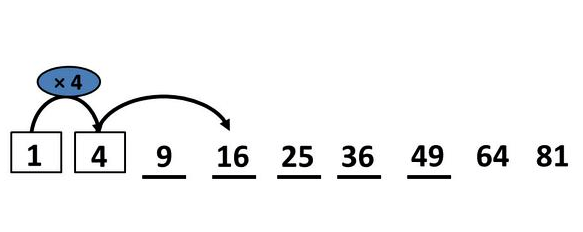
Is any square number times four another square number?
.: [ALG], [T.R.Milne], [Find the Pattern].
. . . View This Fullsize
Take a square number and multiply by four. Is it guaranteed to still be a square number?
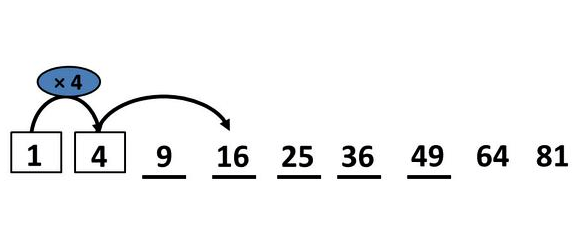
Can we generalize this rule?
Can your students explain why?
.: [ALG1], [Steve Wyborney], [Find the Pattern].
. . . View This Fullsize
Population of organism after n minutes is \(P(n) = k*9^{(\frac{n}{2})}\).
What is the growth factor?
... algebraically stated, what is the ratio of P(t+1):P(t)?
.: [ALG2], [David Marain], [Find the Pattern].
. . . View This Fullsize
This 1961-era 1MB hard drive is not large enough to store this picture before it was condensed and converted to a JPG. It is the size of a counter-top taoster oven.
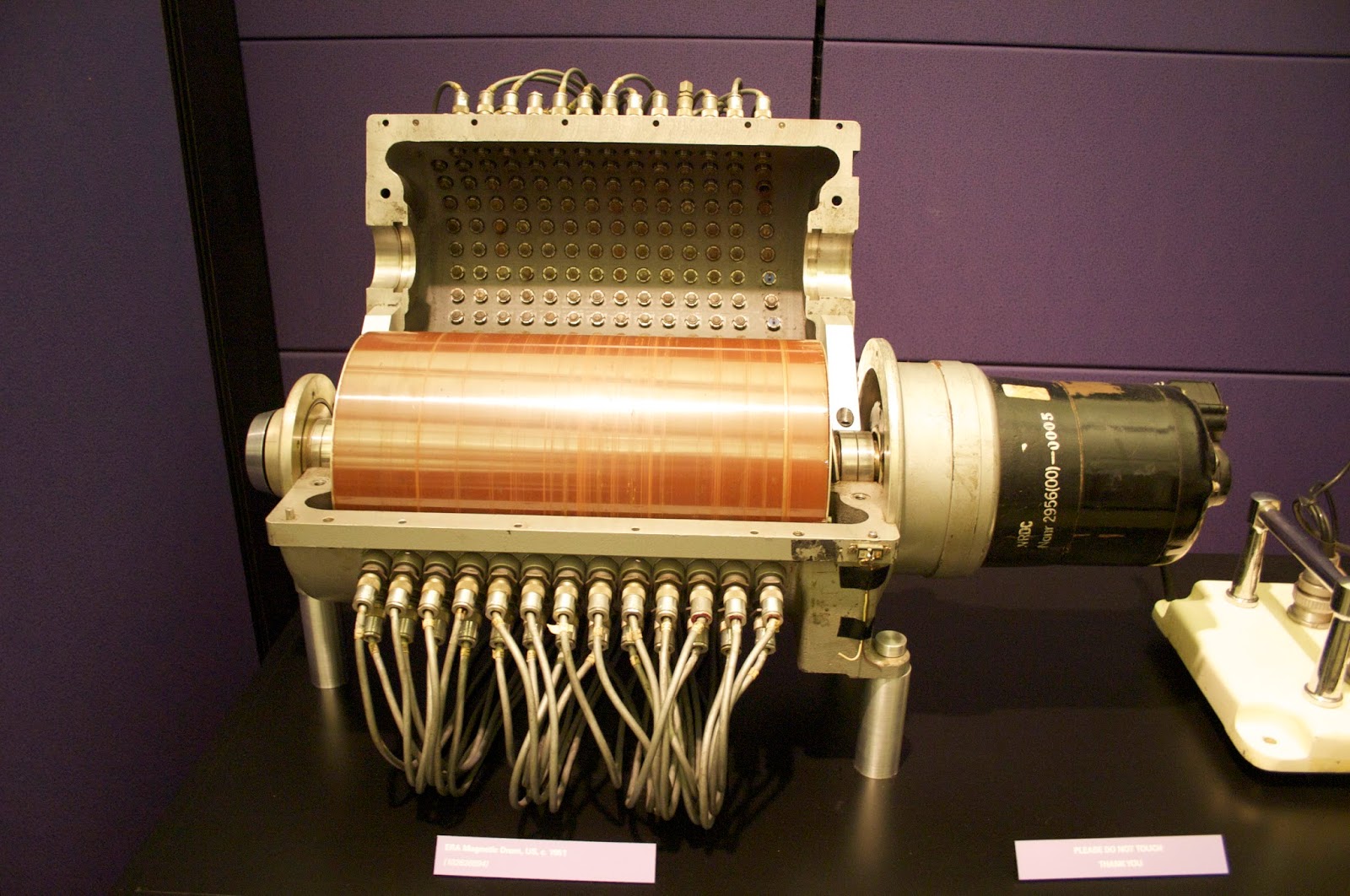
This 28MB IBM 1301 machine cost $110,000.00, weighed half a ton, and was the size of three large refrigerators side by side
.
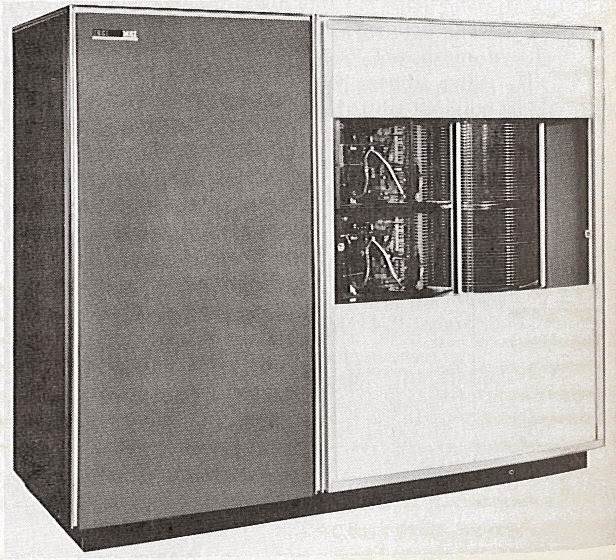
And now you have this to carry around in your pocket.

Go here:
http://www.jcmit.com/flashprice.htm
Can you compose a simple rule about prices over time?
Data copied here:
X (decimal date),Y (US$/MB)
2003.17,0.258
2003.58,0.191
2003.75,0.219
2004,0.191
2004.17,0.238
2004.33,0.266
2004.42,0.223
2005.5,0.0762
2006.33,0.0219
2006.67,0.0156
2006.83,0.0146
2007,0.0122
2007.17,0.0104
2007.33,0.0105
2007.5,0.00976
2007.67,0.00805
2007.75,0.00763
2007.83,0.00732
2007.92,0.00763
2008,0.00458
2008.08,0.00463
2008.33,0.00415
2008.5,0.00354
2008.58,0.00305
2008.67,0.00311
2008.83,0.00183
2008.92,0.00214
2009,0.00162
2009.08,0.00168
2009.25,0.00204
2009.42,0.00214
2009.5,0.00195
2009.58,0.00177
2009.75,0.00214
2009.92,0.00226
2010,0.00244
2010.08,0.00226
2010.17,0.00244
2010.33,0.00201
2010.5,0.00193
2010.58,0.00176
2010.75,0.00177
2010.83,0.00146
2010.92,0.00119
2011,0.001403
2011.08,0.001251
2011.33,0.001342
2011.42,0.001219
2011.67,0.001007
2011.75,0.001037
2012,0.000824
2012.08,0.000824
2012.25,0.000793
2012.33,0.000702
2012.58,0.00058
2012.62,0.00061
2012.83,0.00061
2013,0.000458
2013.08,0.000518
2013.33,0.00058
2013.42,0.000564
2013.58,0.000564
2013.62,0.000564
2013.75,0.000534
2013.83,0.000542
2013.92,0.000548
2014.08,0.000457
2014.17,0.000473
2014.25,0.000366
2014.42,0.000389
2014.58,0.000335
2014.67,0.000345
.: [ALG2], [Curmudgeon], [Find the Pattern].
. . . View This Fullsize
Is it possible to find a positive integer value of n so that this quotient is an integer?
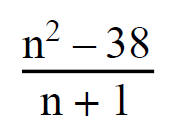
.: [ALG2], [UVM], [Find the Pattern].
. . . View This Fullsize
Sam Shah wrote:
Matt Enlow (math teacher in MA) posted a fascinating problem online today, one he thinks of when storing all those plastic bags from the grocery store. You shove them so they all lie in a single bag, and throw that bag under the sink. Here’s the question: how many different ways can you store these bags?
For 1 bag, there is only 1 way.
For 2 bags, there is still only 1 way.
For 3 bags, there are 2 ways.
Here is a picture for clarification:
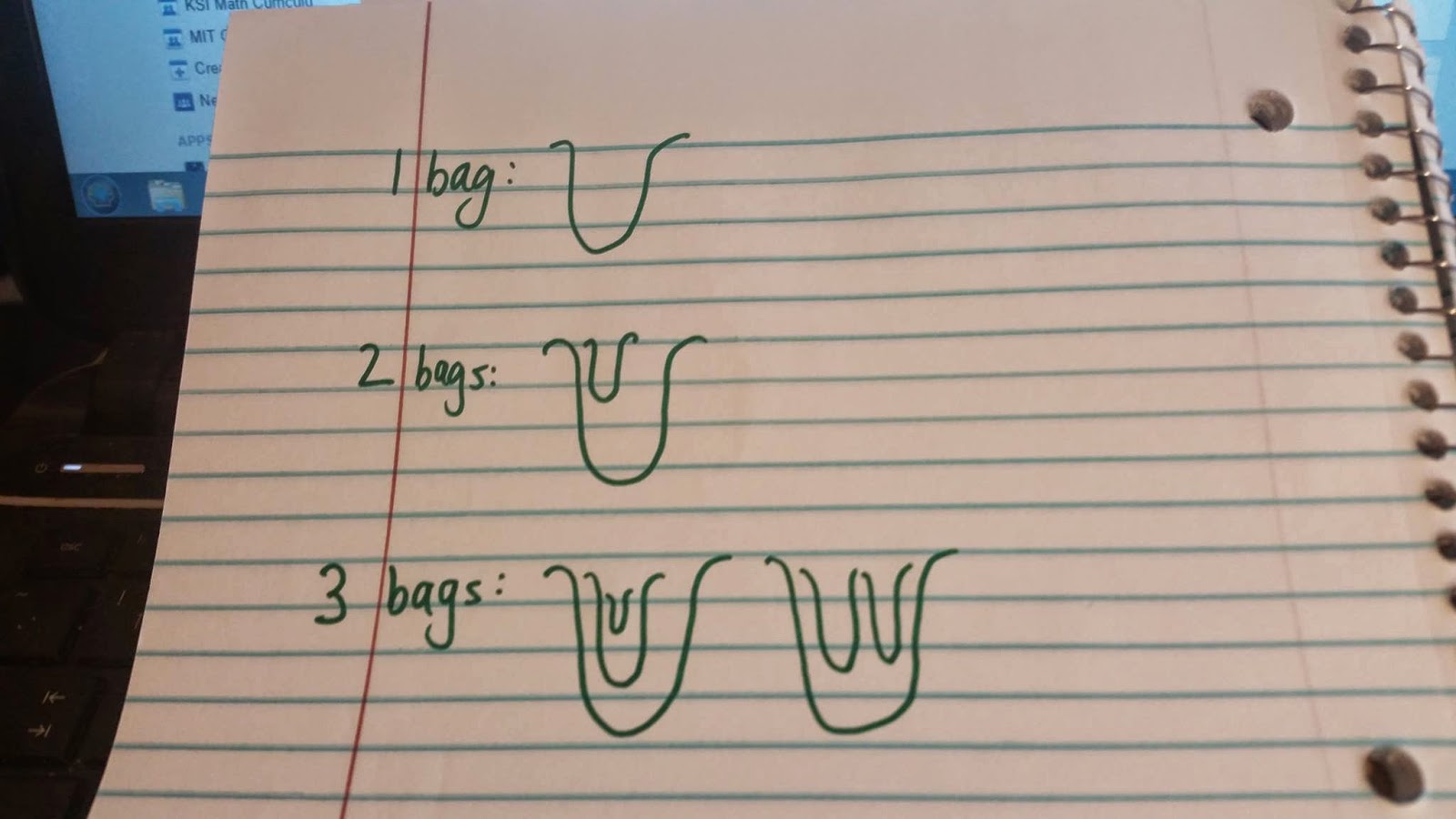
Can you figure out how many ways for 6 bags? 13 bags?
.: [LOGIC], [Matt Enlow], [Find the Pattern].
. . . View This Fullsize

The houses on River Road are numbered consecutively from 10 to 132. Each house number is made with brass digits.
#105 would take 3 digits, for example.
1. How many brass digits are needed to form all the house numbers?
2. The numbers can be purchased for $2.29 each or $20.95 per dozen (of the same digit). What is the cheapest combination of numbers that you can arrange?
.: [PREALG], [Aldo Bianchi], [Find the Pattern].
. . . View This Fullsize
Trying to find a prime number seems difficult. You have to test it against divisibility by all of the primes that are smaller. But what if there were a formula?
Take a counting number, multiply it by itself, subtract it from the result and then add 41
1*1 = 1; 1-1 = 0; 0+41 = 41. That's prime.
2*2 = 4; 4-2 = 2; 2+41 = 43. That's prime.
3*3 = 9; 9-3 = 6; 6+41 = 47. That's prime, too.
4*4 = 16; 16-4=12; 12+41= 53. That's also prime.
How good is this idea?
Will it ever fail?
.: [MS Math], [internet], [Find the Pattern].
. . . View This Fullsize
There's sequences all over the place. What are they?

W1
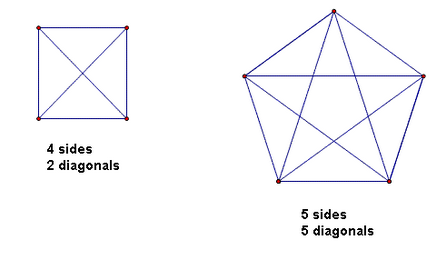
Does your sequence predict the 20th case?

And the 11th and 12th?
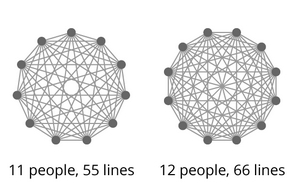
.: [ALG1], [Curmudgeon], [Find the Pattern].
. . . View This Fullsize
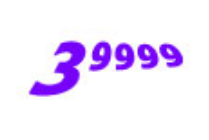
What is the last digit (units digit) in the expansion of \(3^{9999}\)?
How can we find this digit with tech?
Without tech?
Which way is more "clever"?
Which way gives you more satisfaction?
.: [LOGIC], [internet], [Find the Pattern].
. . . View This Fullsize
What is the pattern if we do this for other two-digit numbers?

W
Can we get other results? Are there results that we CAN'T get?
Challenge:
What is the longest string?
.: [LOGIC], [internet], [Find the Pattern].
. . . View This Fullsize
What do you think was the most popular option?
A restaurant I recently visited had the following options on their menu:
- 10 wings for $7.99 with two sauces
- 15 wings for $12.49 with two sauces
- 20 wings for $16.49 with two sauces
- 30 wings for $24.79 with three sauces
- 50 wings for $39.79 with four sauces
.: [MS Math], [internet], [Find the Pattern].